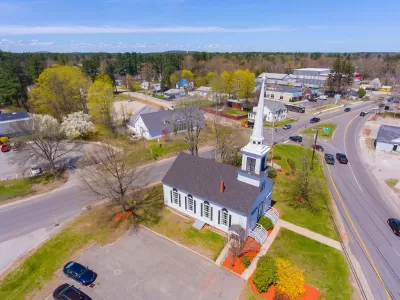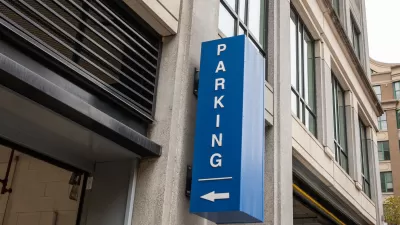Small towns and communities around the country are eliminating parking requirements at a faster rate than big cities.

In an article for Sightline, Catie Gould provides three examples of small towns that have eliminated parking minimums, noting that more small towns have done so than big cities. According to Gould, “While large cities like San Jose, California, and Austin, Texas, garner national press coverage for eliminating parking mandates, this policy reform is most commonly enacted in towns with fewer than 25,000 residents.”
For every U.S. city with populations of over 250,000 that has repealed parking requirements, two small towns (under 25,000) have done so. This is in part due to the fact that there are more small towns than big cities — “But small jurisdictions are also likely underrepresented in the Parking Reform Network data. With little to no media coverage of zoning changes in places like Gilman, Wisconsin, or Canandaigua, New York, those parking reforms are less likely to make it onto the map in the first place.” Gould also points out that many small and rural communities never enacted parking mandates in the first place.
Gould highlights Ecorse, Michigan, where deindustrialization and population loss left the town with ample underused parking and vacant buildings. Eliminating parking requirements has made it easier to redevelop properties, says town planner Nani Wolf.
FULL STORY: Twice As Many Small Towns Have Eliminated Parking Mandates As Large Cities

Study: Maui’s Plan to Convert Vacation Rentals to Long-Term Housing Could Cause Nearly $1 Billion Economic Loss
The plan would reduce visitor accommodation by 25,% resulting in 1,900 jobs lost.

North Texas Transit Leaders Tout Benefits of TOD for Growing Region
At a summit focused on transit-oriented development, policymakers discussed how North Texas’ expanded light rail system can serve as a tool for economic growth.

Why Should We Subsidize Public Transportation?
Many public transit agencies face financial stress due to rising costs, declining fare revenue, and declining subsidies. Transit advocates must provide a strong business case for increasing public transit funding.

How to Make US Trains Faster
Changes to boarding platforms and a switch to electric trains could improve U.S. passenger rail service without the added cost of high-speed rail.

Columbia’s Revitalized ‘Loop’ Is a Hub for Local Entrepreneurs
A focus on small businesses is helping a commercial corridor in Columbia, Missouri thrive.

Invasive Insect Threatens Minnesota’s Ash Forests
The Emerald Ash Borer is a rapidly spreading invasive pest threatening Minnesota’s ash trees, and homeowners are encouraged to plant diverse replacement species, avoid moving ash firewood, and monitor for signs of infestation.
Urban Design for Planners 1: Software Tools
This six-course series explores essential urban design concepts using open source software and equips planners with the tools they need to participate fully in the urban design process.
Planning for Universal Design
Learn the tools for implementing Universal Design in planning regulations.
Ascent Environmental
Borough of Carlisle
Institute for Housing and Urban Development Studies (IHS)
City of Grandview
Harvard GSD Executive Education
Toledo-Lucas County Plan Commissions
Salt Lake City
NYU Wagner Graduate School of Public Service





























